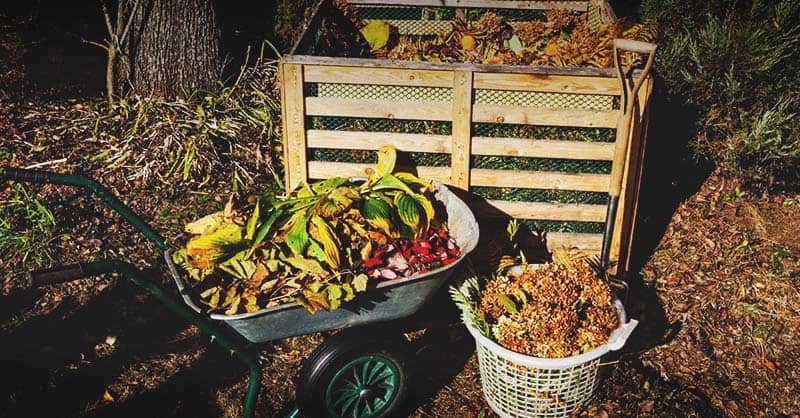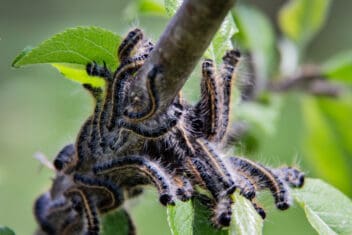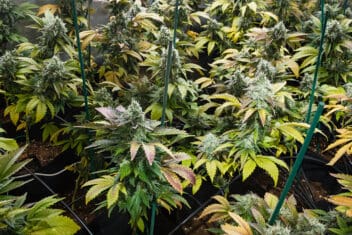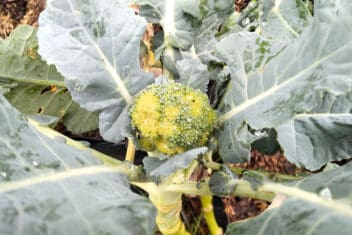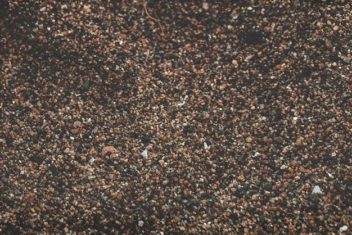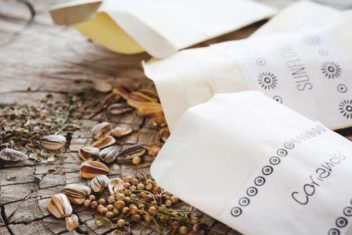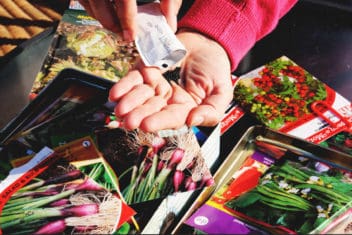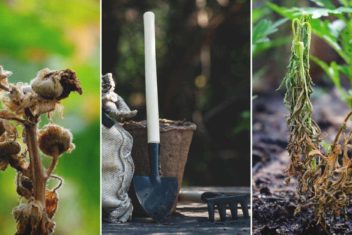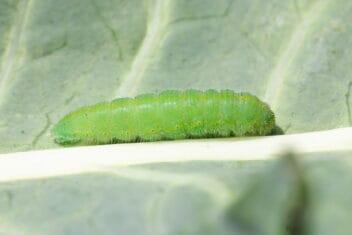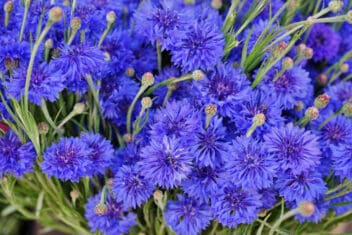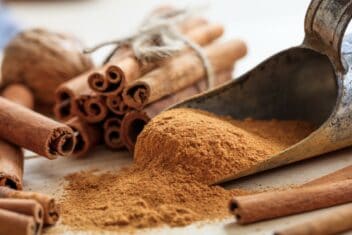Composting may seem like a daunting venture for the new gardener, but it’s really quite simple. Following a few crucial rules is the key to making black gold for your garden.
In fact, learning how to compost is not only easy, but I’d argue essential for any serious gardener.
The first time I dabbled in composting was after I bought a compost bin for my dad for his birthday. I was hoping that we could start an adventure into composting together. In retrospect, I don’t really know what I was thinking. Did I really believe my dad, who has trouble with the concept of recycling, would casually take to the habit of tossing kitchen scraps into a bin outside?
Years later, he’s actually still composting! He tosses most of the kitchen scraps into the city-supplied bin, but the black bin remains in the backyard and is filled with something or other. He continues to ignore my warnings against throwing in non-biodegradable materials – he insists that ceramic pots will eventually break down (pro tip: they won’t. Think about what you might find in an archeological dig, and you’ll understand why). But I’m happy that he tries.
When I moved into the home I share with my husband, I was excited to spot a black compost bin in the corner of the yard. Unfortunately, it was also surrounded by weeds and poorly located. Out of the sun and set back in a deeply shaded area, the bin seldom got hot enough to breakdown the matter I put inside. After trying to make do for a few years, I eventually purchased a new elevated spinning bin, which has completely changed our composting game. Here’s how to change yours.
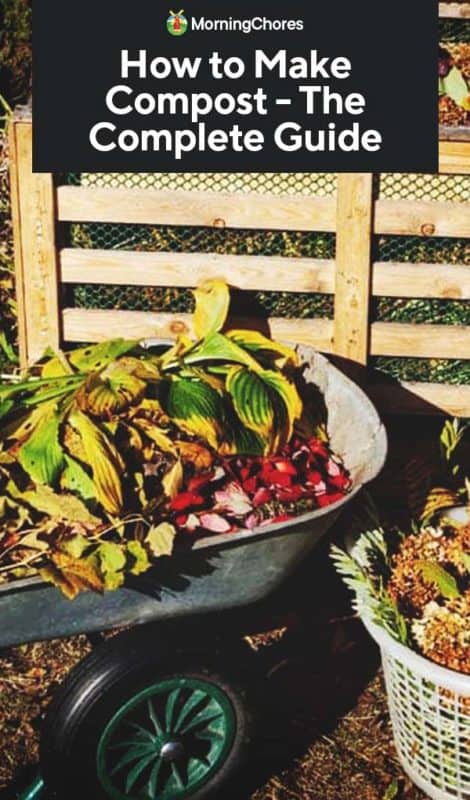
Benefits of Composting
I’ve mentioned that composting is pretty straightforward, but it does require a bit of effort and an initial investment (which varies depending on the method you settle on), so why bother with this garden chore?
- You’ll have a free nutrient-rich amendment to add to your garden each year.
- You’ll be able to make use of kitchen scraps and other bits and bobs otherwise destined for the trash heap.
- Compost also helps improve the soil’s texture, aids in moisture retention, and can be used as mulch.
- If you frequently condition your garden with compost, you’re helping to improve the health of your soil, and in turn, you won’t need to fertilize as much.
Composting Methods: An Overview
Plastic Bin
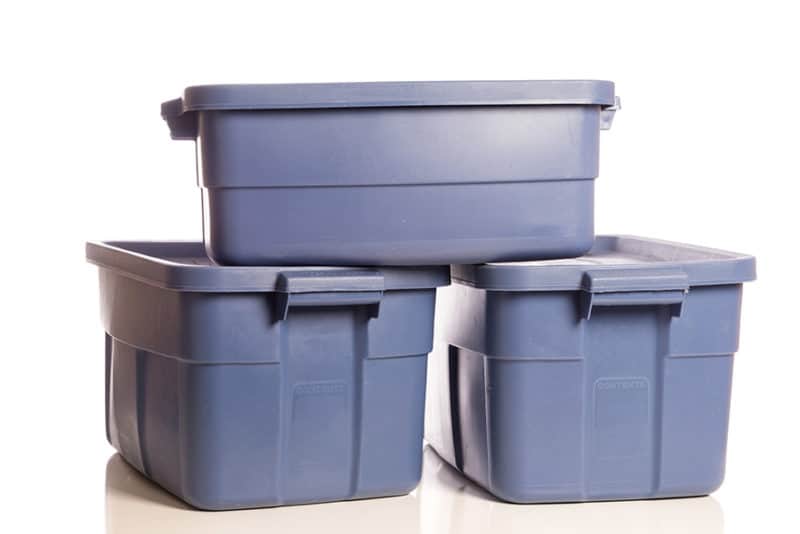
A plastic bin is an easy, tidy way to start your composting journey. You can find a compost bin at your local hardware store for anywhere from $80 to $200. I recommend spending a few extra bucks on a tumbler-style composter because it’s incredibly easy to spin it around and move the contents to aerate the interior organic matter.
Most closed bins are perfect for small gardens. The downside? When your bin is full, you can’t keep adding to it. Also, not all plastic composters make it easy for you to grab your finished compost when needed. Look for a model with a door or compartment, so you’re not struggling to access your finished product.
Open Bin or Wire Containers
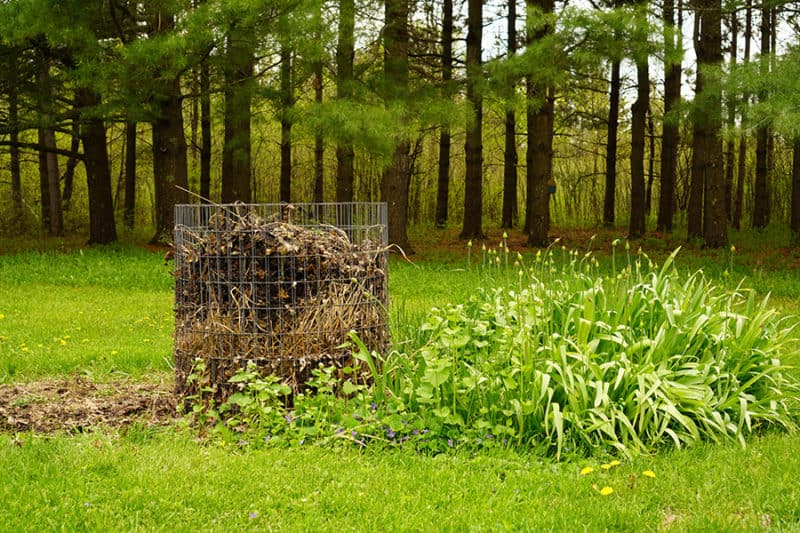
These are typically open, contained heaps that support a large volume of organic matter. Some may also have open pits, but these require a fair amount of room and can look messy, so they’re not a popular choice for home gardeners.
Open compost containers are typically made of wood or wire fencing. The structure keeps things tidy while allowing air to circulate throughout your pile. These types of bins are inexpensive but need to be constructed from raw materials. If you’re handy, though, construction shouldn’t be an obstacle.
You can use multiple bins to speed up the decomposition process. The cost varies depending on the type of materials used and the size of the build. Open systems are also a bit of an eyesore compared to tidy, closed options like plastic tumblers.
Vermicomposting
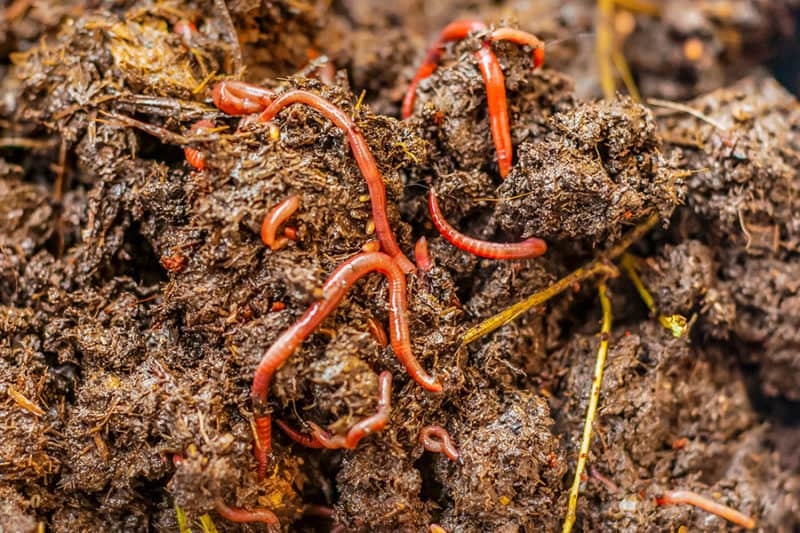
Worm composting can happen inside or outside, depending on the weather conditions in your area. It’s an incredibly popular composting method because it’s effective and easy to do indoors. Worm composting is also a relatively low-cost composting method. The little critters (red wigglers) do all the work for you as long as you give them the appropriate bedding.
The downside is that improper handling can create a pest problem. Fruit flies are attracted to exposed bits of food, so it’s vital that organic matter is buried correctly and covered.
Pit Composting
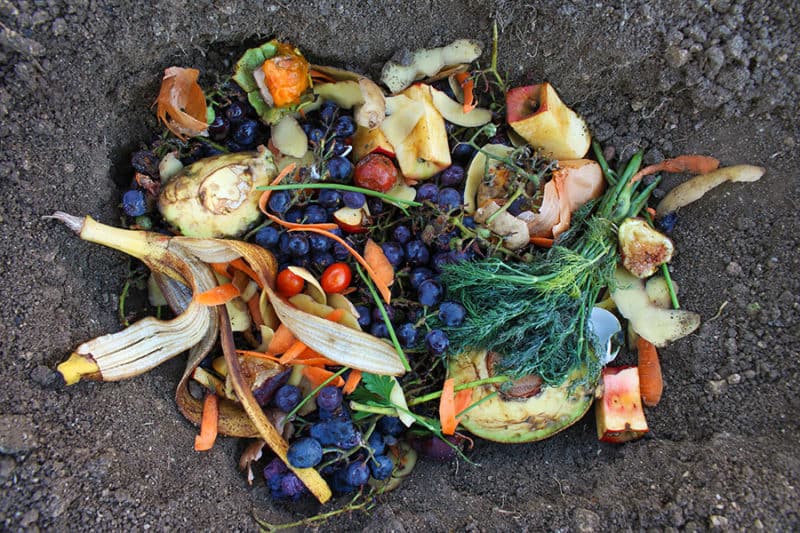
This is a method that’s precisely what it sounds like. You bury your organic waste in a pit. Dig a hole, toss in your food scraps and let Mother Nature do her job.
This method is ideal when you’re starting a garden. There’s no construction involved, and once you’ve placed your organic matter in the hole, no maintenance is required. The process, however, takes time, and you can’t remove the finished compost when it’s done to use in a different area.
Indoor devices
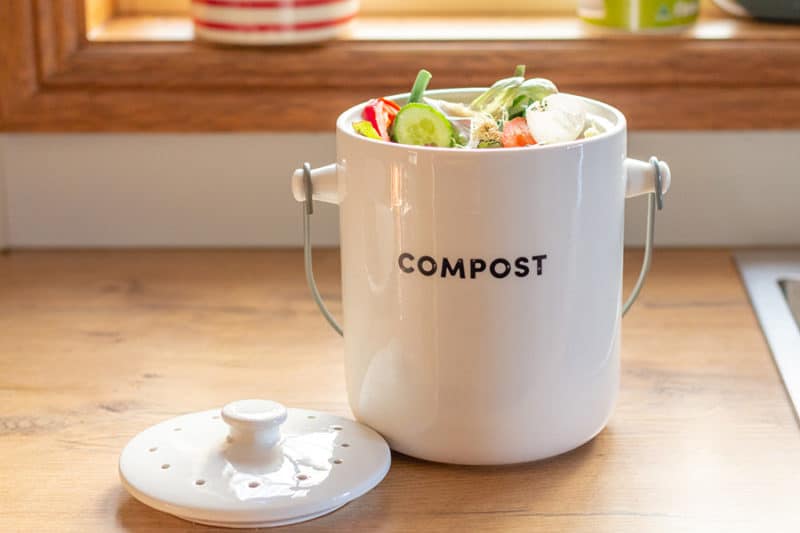
New technologies are allowing folks to compost inside the home with minimal smells and the promise of a pest-free composting experience. When considering a high-tech indoor composter, be sure to read all the reviews to find out what others have to say about a device’s performance. Don’t take marketing jargon at face value.
What’s OK to Compost
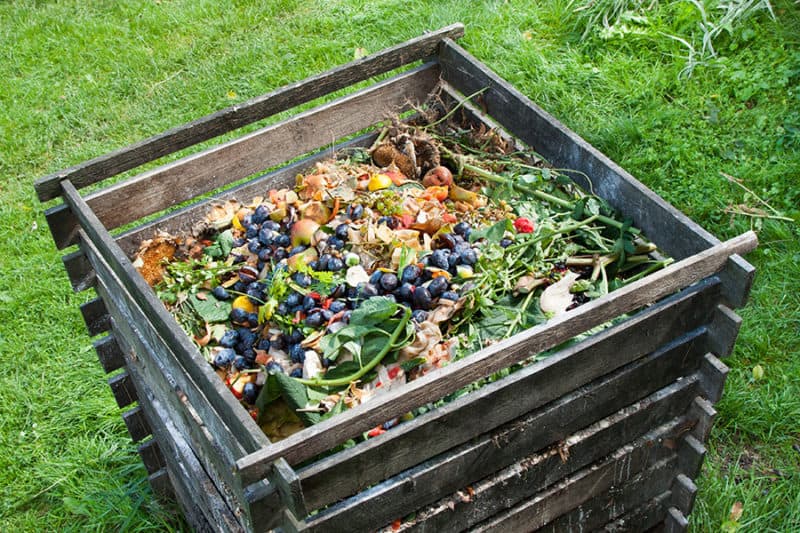
When I’m talking about what’s okay to compost, I’m talking about the stuff you should be putting into your bin. Note that your city’s brown bin may have a different set of rules. Certain municipalities allow additional organic matter (e.g., meat and bones) that shouldn’t be added to your home compost. That’s because the contents are processed in a commercial facility that reaches higher temperatures than a home composting system.
- Grass clippings
- Leaves
- Kitchen food scraps (e.g., vegetable and fruit peels)
- Paper
- Cardboard
- Wood chips
- Straw
- Coffee grounds
See the full list of things to compost here.
What You Shouldn’t Compost
There are some things are toxic, can spread disease, or will never break down, so they shouldn’t go in your compost. Some things, like pet and human waste, can be composted using special techniques, but they aren’t for the beginner.
Things like eggshells are a bit controversial, but I don’t recommend tossing them into your home compost bin. They break down incredibly slowly. I stopped adding them to my backyard compost bin and throwing them into my city’s brown bin, instead.
- Meats (fish, beef, chicken, etc.)
- Dairy products
- Bones
- Grease or oils
- Cooked foods
- Disease or pest-infested plants
- Weeds
- Pet or human waste
- Plastic (seems obvious, but you’d be surprised what I’ve seen my dad throw into his bin…)
- Anything that’s been exposed to pesticides
- Eggshells
Maintaining Your Compost Bin or Pile
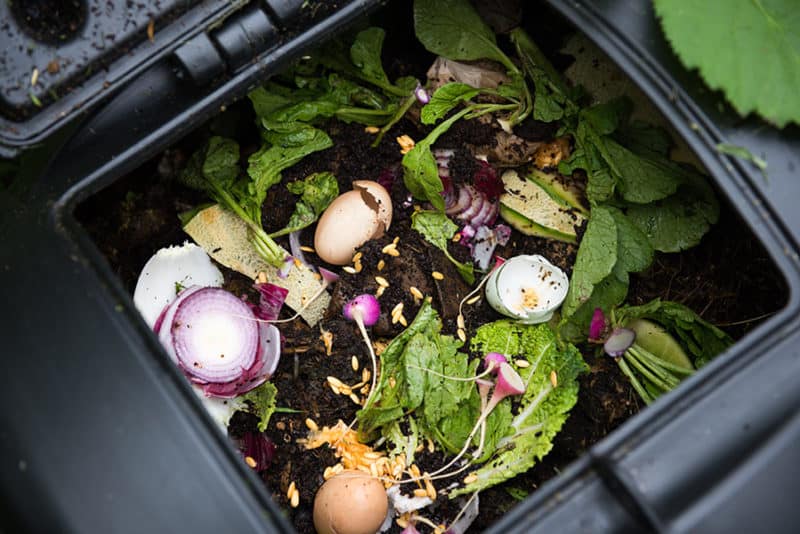
Location
Before installing or building your bin, scout out the perfect spot. Select a sunny area that doesn’t tend to puddle during a rainstorm. Choose an easily accessible area, and don’t place your bin somewhere out of reach. You want to be able to dump out kitchen scraps easily and not feel annoyed when it’s time to trudge outside to empty your indoor bin.
That said, you don’t want an area that is touching any buildings, and you want at least 6 hours of sunlight hitting your bin a day.
“Browns” and “Greens” Ratio
Gardeners often use the term brown and green materials for compost. The common knowledge is to keep the ratio to one part brown and two parts green.
Examples of brown materials include yard matter like dead leaves and twigs, pine needs, paper, and dryer lint. Green matter includes kitchen waste and grass clippings – which are literally green – but coffee grounds and tea bags, and animal manure also count, even though they aren’t green.
The concept of browns and greens are easy to understand, but they are not technically correct.
First, some materials that look brown are actually greens, and vice versa. Second, a lot of things that look brown and greens can be bad for your compost bin.
Third, the 2:1 brown to green ratio is not a good rule of thumb because not all green materials have the same composition, so do brown materials.
While there are no significant danger of using the wrong ratio, as long as you don’t use the wrong materials, your compost will cook at a much slower rate. This is not good if time is important to you.
Carbon to Nitrogen Ratio (C/N)
Using the carbon to nitrogen ratio is a much better method because they are the actual building blocks of your compost materials that benefit plants. Instead of imagining materials as browns and greens, we look at how much carbon do they have compared to nitrogen.
For example, the C/N ratio of grass clippings is 20:1. That means grass clippings have 20 times the amount of carbon compared to its nitrogen.
The ideal compost should have between 20:1 to 40:1 C/N ratio, with 24:1 being the absolute sweet spot for microbial activity.
Because the C/N ratio of grass clippings is 20:1, now we know that grass clippings make a great compost material and we can safely throw in more materials with higher carbon to get it to 24:1.
The downside of using carbon and nitrogen is that it’s not easy to memorize the C/N ratio for every single compostable material. It’s also not easy to build the perfect 24:1 compost without using maths.
Which is why we built this compost calculator to help you find the C/N ratio of many common compost materials and then automatically calculate the carbon to nitrogen ratio based on materials you choose.
Smell
Your compost bin shouldn’t stink to high heaven. If it does, the balance of its contents may be off. If you have a closed bin composter, be sure to tightly affix the lid to keep pests away. Keep your pile moist without waterlogging it – the contents should feel like a wrung-out sponge.
If possible, shred or cut large items into small pieces before tossing them into your compost bin or pile. A whole chunk of spoiled carrot takes a lot longer to decompose than one that’s been cut into tiny pieces.
Your compost is ready to use when it’s crumbly and smells nice and earthy.
Compost Troubleshooting
Having trouble with your compost pile? Here are a few common issues that you might encounter when first starting out:
“My compost pile smells terrible“
The culprit: Be sure to turn your pile regularly to aerate the contents and ensure it’s oxygenated. You may be overwatering your pile, so put away the hose and forego watering for a little while.
“My compost pile isn’t getting hot“
The problem: You need to add more green waste – toss in more grass clippings and vegetable waste. Remember, a healthy pile needs a ratio of one part brown to two parts green material.
Alternately, your compost pile may not have the right moisture level. Aim for moist but not wet.
“Pests are getting into my compost pile“
The solution: You’re throwing the wrong stuff into your bin, and it’s attracting pests, including rats, raccoons, and flies. Kitchen scraps can also attract critters if they’re not buried deep enough. If you’re composting in a plastic bin, cover the container properly.
“My compost pile is full of bugs“
The reality: It’s probably normal. While flies may be attracted to your pile for the wrong reasons (it’s smelly, or food scraps aren’t buried properly), other bugs are totally normal inhabitants in your pile.
If there’s a huge population of harmless insects (like ants or maggots, for instance), it may point to a problem with you composting progress. Your pile may not be hot enough, which allows random insects to take up residence. Finding a way to increase the heat of your pile is the answer to most problems, really.
